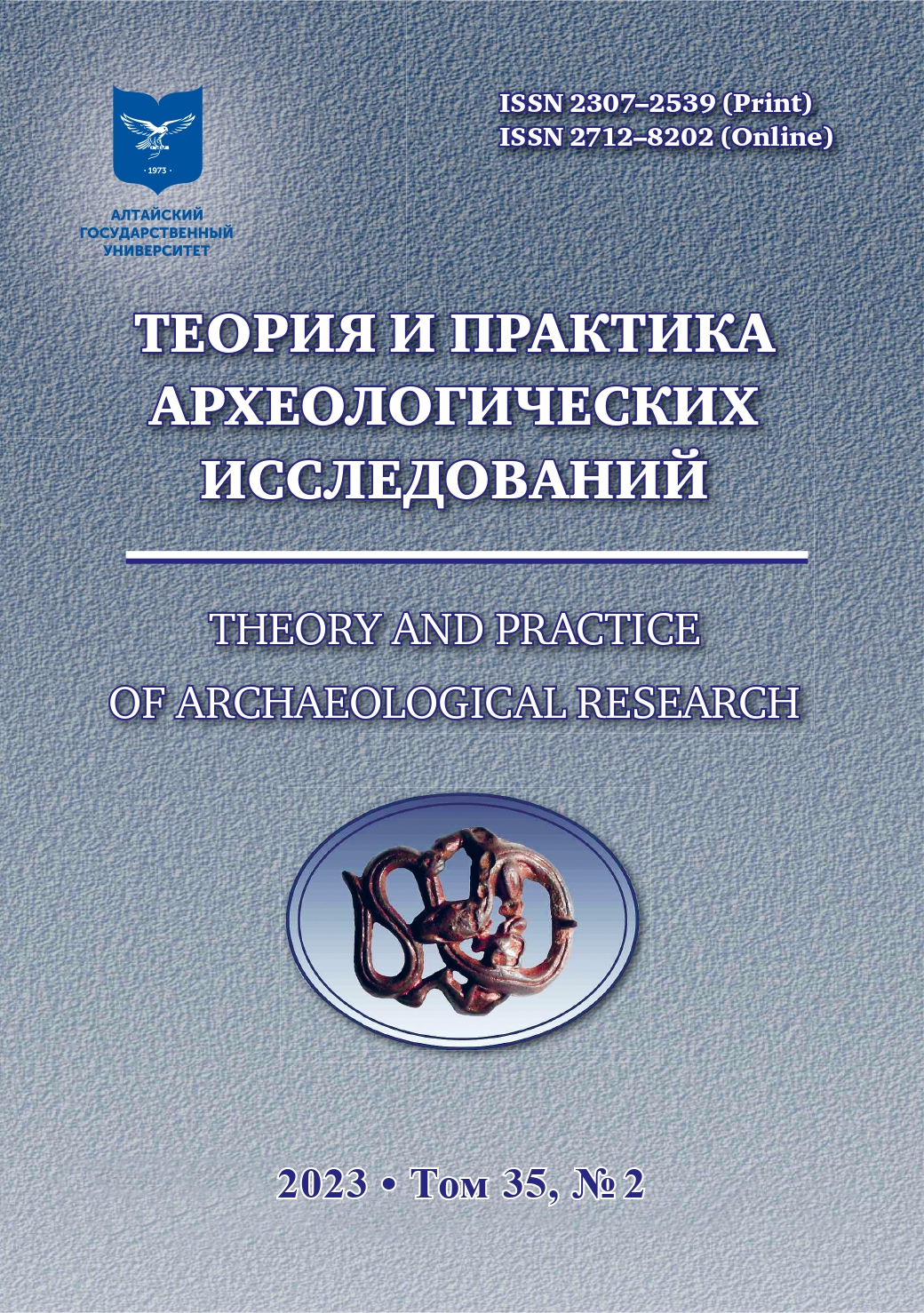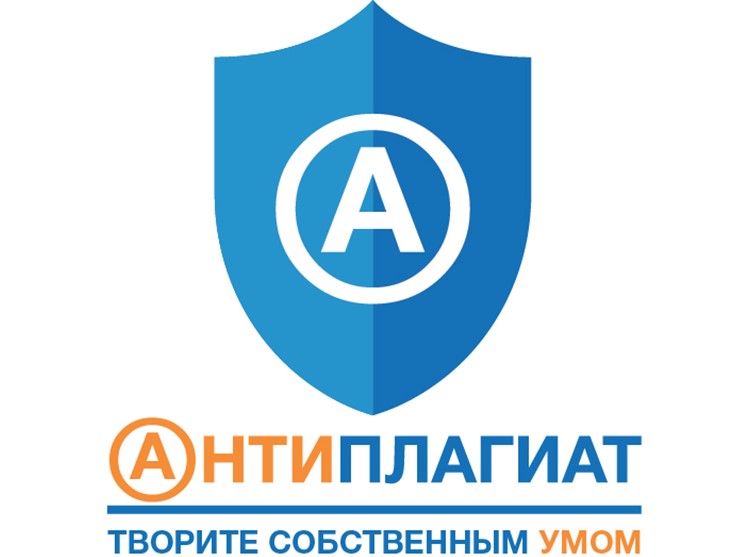ANOTHER FIND OF THE EASTERN MIRROR WITH SPHINXES ON THE MIDDLE YENISEI
Abstract
The article is devoted to the publication of another metal button mirror with paired figures of sphinxes and a floral ornament with a Kufic inscription, recently discovered on the territory of the Middle Yenisei. In this region, similar items are not only rare (exhibits of the Minusinsk and Abakan museums), but are also markers of the northern border of the distribution of these items in the Mongolian time. The сlarity of the decoration details of the product gives every reason to consider it far from being the latest copy from the original. Sufficiently good preservation of the images on the mirror (epigraphics, fantastic animals and floral decorations) makes it possible to analyze in detail not only individual artistic details, but also to make a probable attribution of the origin and chronology of this object. The peculiarities of the style of the Kufic inscription and images of sphinxes make it possible to date the mirror no later than the 11th–12th centuries, and also to include it in the circle of objects produced in Iran or Central Asia. The absence of such imported items in the south of Western Siberia north of the middle reaches of the Yenisei River is probably due to the historical features of the cultural ties of the medieval population in the initial period of the 2nd millennium AD. Overall, the new find of a mirror with a Kufic inscription and a paired image of the sphinxes on the background of a floral ornament makes it possible to clarify the local and general features of the distribution of such items in Eurasia in the Middle Ages. This, in turn, provides certain grounds for reconstructing the dynamics of the changes in the external relations of Southern Siberia over the past millennium.
Downloads
Metrics
References
Berezkin Yu.E. On Universals in Mythology, Individual and Typical in Archaeological Culture (the experience of the compositional approach). In: Actual Problems of the Study of Archaic. St. Petersburg : MAE RAN, 2014. P. 237–252. (In Russ.)
Bogomolov G.I., Maksudov F.A., Babadzhanov B.M. Bronze Mirror from the Village of Bashkubi, Zaaminsky District. In: The Last Encyclopedist: to the Anniversary of B.A. Litvinsky. Moscow : Institut vostokovedeniya RAN, 2013. P. 121–135. (In Russ.)
Borodovskiy A.P., Kedrova I.I., Kovaleva V.M., Pereverzeva O.V. Ulchi: Catalog of the Collection of the Museum of History and Culture of the Peoples of Siberia and the Far East of the Institute of Archaeology and Ethnography of the Siberian Branch of the Russian Academy of Sciences. Novosibirsk : Izd-vo In-ta arheologii i etnografi i SO RAN, 2004. 86 p. (In Russ.)
Zakariyaev Z.S. Arabic-language Epigraphy of Mosques in the Lezgian Villages of the Akhtyn District of Dagestan (inscriptions of the 11th-18th centuries). Vestnik SPbGU. Vostokovedenie i afrikanistika = Bulletin of St. Petersburg State University. Oriental and African studies. 2021;13(4):542–568. (In Russ.)
Krachkovskaya V.A. Evolution of the Kufi c Font in Central Asia. Kratkie soobshcheniya Instituta arheologii = Brief Reports of the Institute of Archaeology. 1949а;XXVIII:94–96. (In Russ.)
Krachkovskaya V.A. Evolution of the Kufi c Font in Central Asia. Epigrafi ka Vostoka = Epigraphy of the East. 1949b;III:2–27 (In Russ.)
Lubo-Lesnichenko E.I. Imported Mirrors of the Minusinsk basin (on the question of external relations of the ancient population of Southern Siberia). With the Appendix of the Article by Bogdanova-Berezanskaya I.V. Moscow : Nauka, 1975. 166 p. (In Russ.)
Oborin Yu.V., Savosin S.L. Chinese Bronze Mirrors. The Case of Random Finds. Electronic Edition. Krasnoyarsk ; Moscow, 2017. 527 p. (In Russ.)
“A Gift to the Contemplative”. The Wanderings of Ibn Battutta: Exhibition Catalog. St. Petersburg: Izdatel’stvo Gosudarstvennogo Ermitazha, 2015. 512 p. (In Russ.)
Polidovich Yu.B. About one Pictorial Tradition in the Art of the Peoples of the Scythian World. In: Nomads of the Kazakh Steppes: Ethnosociocultural Processes and Contacts in Eurasia of the Scythian-Saka Epoch. Astana : Prezidentskij centr kul’tury Respubliki Kazahstan, 2008. Pp. 38–59. (In Russ.)
Rudenko K.A. Formation of Syncretic and Original Forms of Products in the Eurasian Space in the 13th–14th Centuries (on the example of artistic products). Srednevekovye drevnosti Primor’ya = Medieval Antiquities of Primorye. 2022;5:342–364. (In Russ.)
Rudenko K.A., Oborin Yu.V. Mirrors with Fantastic Animals from Bulgar and Th eir Analogies. Drevnosti Sibiri i Central’noj Azii = Antiquities of Siberia and Central Asia. 2017;8(20):143–168. (In Russ.)
Snesarev G.P. Relics of Pre-Muslim Beliefs and Rituals among the Uzbeks of Khorezm. Moscow : Nauka, 1969. 336 p. (In Russ.)
Snesarev G.P. People and Animals (ethnographic searches in the field of animal worship). Sovetskaya etnografi ya = Soviet Ethnography. 1972;1: 166–177. (In Russ.)
Tishkov Yu.V. “Siberian Janus” from the Ir River of the Omsk Region in the Context of Paleoethnography. Vestnik Omskogo universiteta. Ser.: Istoricheskie nauki = Bulletin of the Omsk University. The Series: Historical Sciences. 2017;1(13):156–164. (In Russ.)
Toporov V.N. World Tree. Myths of the Peoples of the World: Encyclopedia. Moscow : Sovetskaya enciklopediya, 1980. Vol. 1. Pp. 398–406. (In Russ.)
Fedorova N.V. Torevtika of Volga Bulgaria: Silver Products of the 10th–14th Centuries from Trans-Ural Collections. In: Proceedings of the Kama Archaeological and Ethnographic Expedition. Perm : Izdatel’stvo Permskogo gosudarstvennogo pedagogicheskogo universiteta, 2003. Issue 3. Pp. 138–153. (In Russ.)
Fedorova N.V. Medieval Silver of Volga Bulgaria. In: Svetozarnaya Kazan: Album-catalogue of the Exhibition. St. Petersburg : ARTEGO Central’nyj vystavochnyj zal “Manezh”, 2005. Pp. 20–21. (In Russ.)
Yavorskaya L.V. Metal Mirrors from the Cities and Necropolises of the Golden Horde Lower Volga Region: on the Problem of Typology and Traditional Ornamentation. Voprosy istorii i arheologii Zapadnogo Kazahstana = Questions of History and Archeology of Western Kazakhstan. 2011;1:266–275. (In Russ.)
Copyright (c) 2023 А.П. Бородовский

This work is licensed under a Creative Commons Attribution 4.0 International License.
Theory and Practice of Archaeological Research is a golden publisher, as we allow self-archiving, but most importantly we are fully transparent about your rights.
Authors may present and discuss their findings ahead of publication: at biological or scientific conferences, on preprint servers, in public databases, and in blogs, wikis, tweets, and other informal communication channels.
Theory and Practice of Archaeological Research allows authors to deposit manuscripts (currently under review or those for intended submission to ABS) in non-commercial, pre-print servers such as ArXiv.
Authors who publish with this journal agree to the following terms:
- Authors retain copyright and grant the journal right of first publication with the work simultaneously licensed under a Creative Commons Attribution License (CC BY 4.0) that allows others to share the work with an acknowledgement of the work's authorship and initial publication in this journal.
- Authors are able to enter into separate, additional contractual arrangements for the non-exclusive distribution of the journal's published version of the work (e.g., post it to an institutional repository or publish it in a book), with an acknowledgement of its initial publication in this journal.
- Authors are permitted and encouraged to post their work online (e.g., in institutional repositories or on their website) prior to and during the submission process, as it can lead to productive exchanges, as well as earlier and greater citation of published work (See The Effect of Open Access).








2.jpg)




